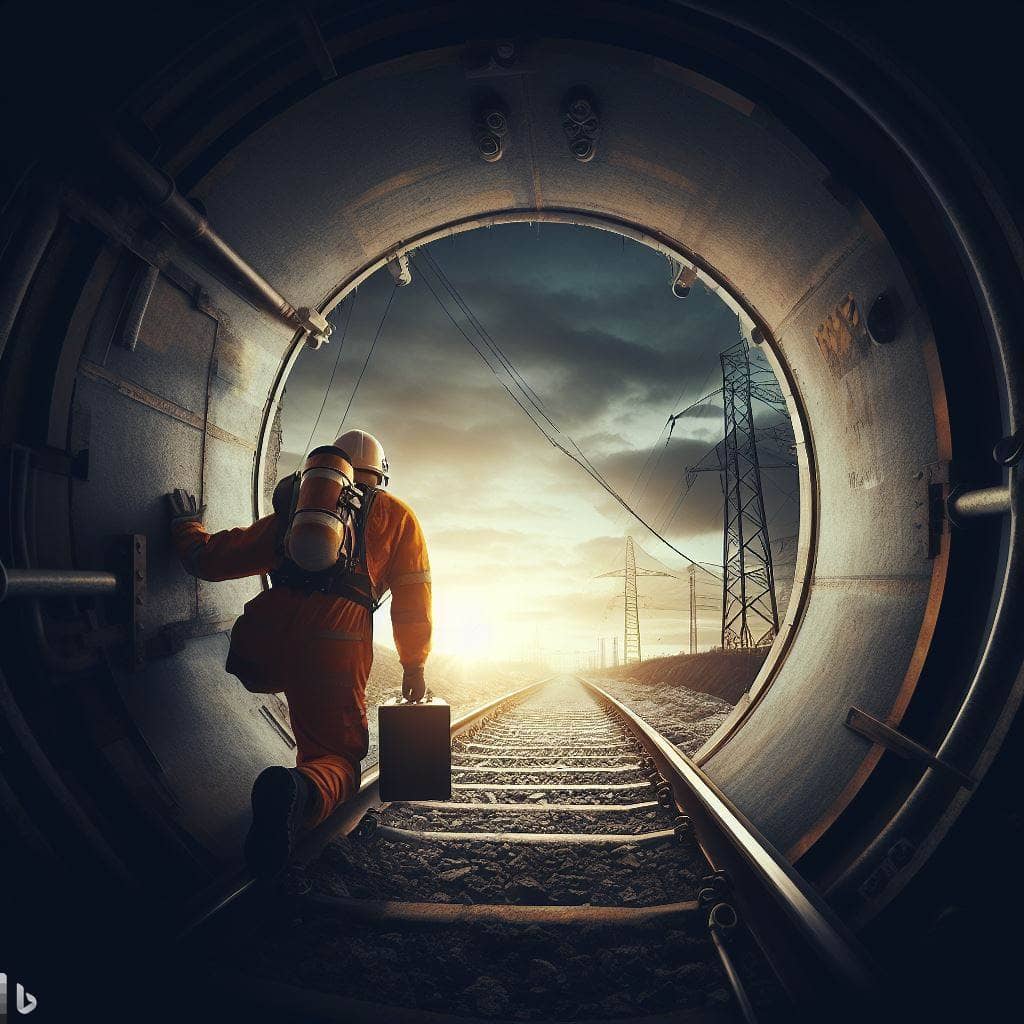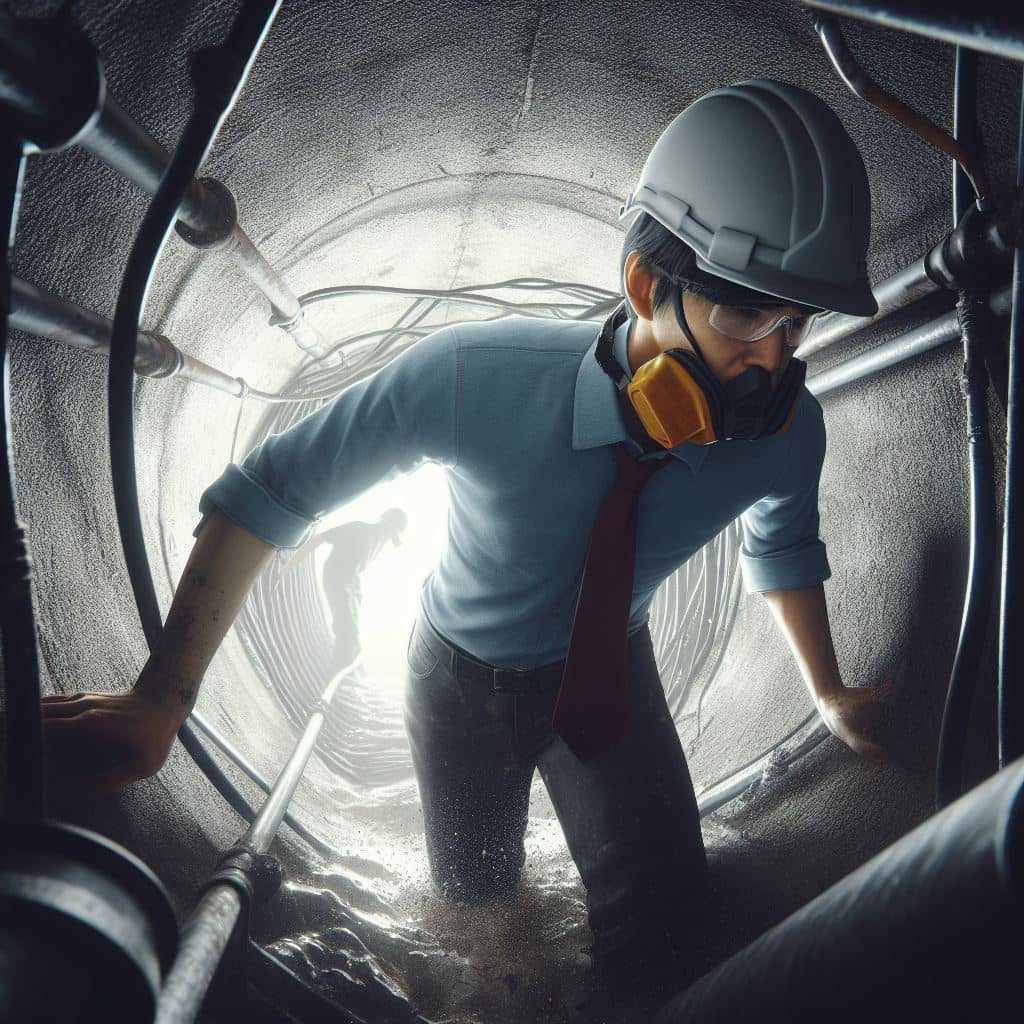What Are Confined Spaces? Here’s The OSHA Definition
Confined spaces are a common element in many workplaces. However, they can pose severe risks to workers’ health and lives if they are not properly understood and managed. OSHA provides a clear definition of confined spaces and sets out certain guidlines for employers to protect their workers in such environments.
It is important to implement these guidelines across industries. However, the construction and manufacturing industries in particular should be wary of confined spaces and pay heed to OSHA’s recommendations about them.
This in-depth guide will give you insights about OSHA confined spaces definition, its types, and OSHA’s requirements for confined spaces.
How Does OSHA Define Confined Spaces?
OSHA has defined certain characteristics that can help workplaces identify spaces and areas that pose unique risks to workers. Here is what most confined spaces have in common.
1. Limited Means of Entry or Exit
A confined space is typically characterized by a design that restricts the ability of workers to enter or exit easily. This limitation can be due to the size and shape of the space or the presence of obstructions.
2. Large Enough for Entry and Work
While a confined space may limit entry and exit, it must still be large enough for an employee to enter and perform assigned work. It’s important to note that this definition doesn’t imply that the worker needs to move freely or comfortably within the space.
3. Not Designed For Continuous Occupancy
Confined spaces are not intended for continuous occupancy by workers. In constrast, they are primarily designed for other purposes, such as storage, maintenance, or inspection.
4. Limited Ventilation
Many confined spaces have limited natural ventilation, which can lead to the accumulation of hazardous substances or low oxygen levels. This lack of airflow can pose significant risks to workers.
What Are the Types of Confined Spaces?
Confined spaces can be categorized into different types based on their characteristics and associated hazards. Understanding these types is essential for implementing proper safety measures.
Here are some common types of confined spaces.
1. Tank and Vessels
These include storage tanks, silos, and containers designed for holding liquids, gases, or solids. Workers may enter these spaces for inspection, cleaning, or maintenance.
2. Pipelines and Sewers
Pipelines, sewers and tunnels fall into the category of confined spaces. Workers may need to enter these spaces for repair or maintenance.
3. Boilers and Furnaces
Areas like boiler drums and furnaces can be confined spaces, particularly when maintenance or repair work is required.
4. Manholes and Sewer Systems
Utility workers often encounter confined spaces in the form of manholes or sewer systems. However, these spaces can be hazardous due to gases, lack of oxygen, or physical obstructions.
5. Crawl Spaces and Attics
In building construction and maintenance, crawl spaces and attics may be considered confined spaces, posing risks associated with limited space and potential hazards.
6. Tunnels and Underground Passages
Construction workers working in tunnels or underground passages face confined space challenges due to limited access and potential exposure to harmful substances.
What Are Permit-Required Confined Spaces?
OSHA uses the term “permit-required confined space” to describe the confined spaces that have one or more of the following characteristics.
- Contains or could develop a hazardous atmosphere
- Has materials that might engulf someone going in
- Its walls narrow inward or its floors slope down, creating a risk of trapping or suffocating an entrant
- Holds any other known safety or health hazards, like machinery without proper safeguards, exposed live wires, or the risk of heat-related stress
What Are OSHA’s Requirements for Confined Space?
 OSHA has established stringent requirements to ensure the safety of workers in confined spaces. Here are some key OSHA requirements to protect workers from hazards in confined spaces.
OSHA has established stringent requirements to ensure the safety of workers in confined spaces. Here are some key OSHA requirements to protect workers from hazards in confined spaces.
1. Identify Confined Spaces
Employers must first identify and document all confined spaces in their workplace. This includes evaluating whether a space meets OSHA’s definition of a confined space and determining if it poses any potential hazards.
2. Create An Entry Permit System
For permit-required confined spaces (those with recognized hazards), employers must develop and implement an entry permit system. This system outlines the procedures and precautions necessary before entry is allowed. It includes provisions for atmospheric testing, equipment checks, and rescue plans.
3. Provide OSHA Safety Training
Workers who enter confined spaces must receive appropriate OSHA safety training. Courses like Confined Space Hazard safety inform employees how to deal with a wide variety of workplaces hazards. Workers who complete these course can not only protect themselves but also their colleagues from potential dangers.
4. Conduct Atmospheric Testing
Before entry, employers must test the atmosphere within the confined space to check for hazardous conditions. This includes monitoring for gases, vapors, and oxygen levels. Worksplaces must continously monitor the atmosphere as workers enter into confined spaces.
5. Foster Effective Communication
Effective communication is critical during confined space work. Employers must establish a means of communication between workers inside and outside the space. This ensures rapid response in case of emergencies.
6. Create A Practical Rescue Plan
Employers must have a rescue plan in place, specifying how workers will be rescued in the event of an emergency. This plan should consider the specific hazards of the confined space and the availability of rescue equipment and personnel.
7. Review and Make Continuous Improvements
Employers should regularly review and update their confined space procedures to reflect changing conditions and lessons learned from incidents or near-misses.
8. Make Proper Documentation
Workplaces must document and retain for review all aspects of confined space work, including hazard assessments, entry permits, training records, and rescue plans.
Conclusion
Understanding the OSHA’s definition of confined spaces and the associated requirements is essential to ensure the health and safety of workers in potentially hazardous environments. It is the employer’s responsibility to identify confined spaces and the risks associated with them.
Additionally, workplaces need to provide OSHA safety training and enroll the employees in courses like OSHA 10-hour construction and OSHA 30-hour construction to equip them the required knowledge about . These courses provide valuable training to make your work environment more safe and healthy.





